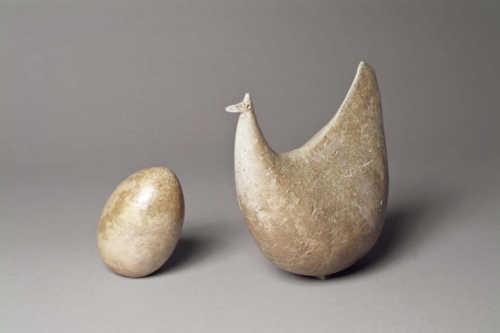Jean and Jacqueline Lerat Tribute / Galerie Capazza, Nançay, Paris

Jean and Jacqueline Lerat Tribute / Galerie Capazza, Nançay, Paris
September 29 - December 2, 2012
Openning reception: Saturday, September 29th, 5-8 pm.
To welcome today the artworks of Jean and Jacqueline Lerat is an honor, a recognition. We are proud and moved to have published this book, and we will do our best to present «their treasures», which let us hope to deserve the confidence granted by François and Claire Lerat, their children.
Gérard Capazza
Is it pretentious to consider the artwork as an haiku, a so marginal poem.
This is no about ceramics but creation.
I am not interested in the enamels skills. Skills, technique, are situated before creation. The structure maybe? As for the skeleton, you have to add something. Questions have been asked in a dense way.
Somehow, life has imposed.
Then, you could go from the “object situation” to the “creation situation”.
Jacqueline Lerat, May 5th, 1993
It is fundamental that beauty and meaning depend on the person who look at the piece as much as the quality of the work. The artist has the right to be misunderstood, privilege that «the official artist» refuses by his will to set up in advance the way people will per- ceive his work.
Modestly assuming their function, but always overflowing when they are admired, the ceramics of Jean and Jacqueline Lerat oppose the demanding nature of relationship to the whims of actuality…
Bernard Noël, extract of the book Jean et Jacqueline Lerat, éditions Galerie Capazza

Jean (1913-1992) and Jacqueline (1920-2009) LERAT Biography
Jean Lerat’s family is an old family from Berry (French province), where you can find farmers, cabinet makers, horse breeders, Antique dealers. Jean starts at the Fine Arts school in Bourges to learn wood sculpture. Then, he concentrates on sculpture, drawing and landscapes painting. The encounter with François Guillaume will change his life. Dealer, designer and crockery editor in Bourges since the 30’s, he has a lot of contacts with the ceramics and glass factories which realize his models for the French restaurants. He asks Jean Lerat to work in La Borne in 1941, to “renew the pottery tradition fo the village”. He rents a workshop and asks Armand Bedu to supply Jean with the needed materials and to fire the pieces that will be sold in the shop.
In December 1942, Jean Favière, who works at the Berry Museum, and Henri Malvaux, new director of the Fine Arts school in Bourges, start showing interest to the craft productions of la Borne. The village is already renowned by Parisian institutions (Museum of the Decorative Arts, Ceramics Museum of Sèvres) for its authenticity.
Henri Malvaux asks Jacqueline Bouvet to come to La Borne in July 1943. She is allowed to stay until May 1944 thanks to an agreement with François Guillaume. Jean and Jacqueline get married on February 3rd of 1945. They will work in the same place, but they will follow a personal path. But they share clay, enamels and firing.
In 1955 they moved to Bourges, building a new wood-firing kiln and beginning to create more sculptural and abstracted works. While an attentive observation should lead the collector to distinguish their style, they adopt a mutual signature JLERAT from 1945 to 1948, then JLERAT from 1948 to Jean’s death. After 1992, Jacqueline starts again to sign JLERAT.
Their collaboration in ceramics is considered to be among the most important in post- war France. Their teaching at the Ecole Nationale des Beaux Arts in Bourges has influen- ced new generations of potters.
Gallery Hours: Saturdays, Sundays and Holidays 10 - 12.30 am & 14.30 - 19 pm. All year long by appointment.
CONTACT
Tel. +33.(0)2.48.51.80.22
contact@capazza-galerie.com
Galerie Capazza
Grenier de Villâtre
18330 Nançay - France
www.capazza-galerie.com
Above: Jean Lerat, (first) Poule avec son oeuf, 27 x 32 x 13.5 cm, 16 x 9 x 9 cm, Enamelled stoneware, 1962. (second) Rocher Noir, 53 x 25 x 14 cm, Enamelled stoneware, 1980.
More exhibitions »
